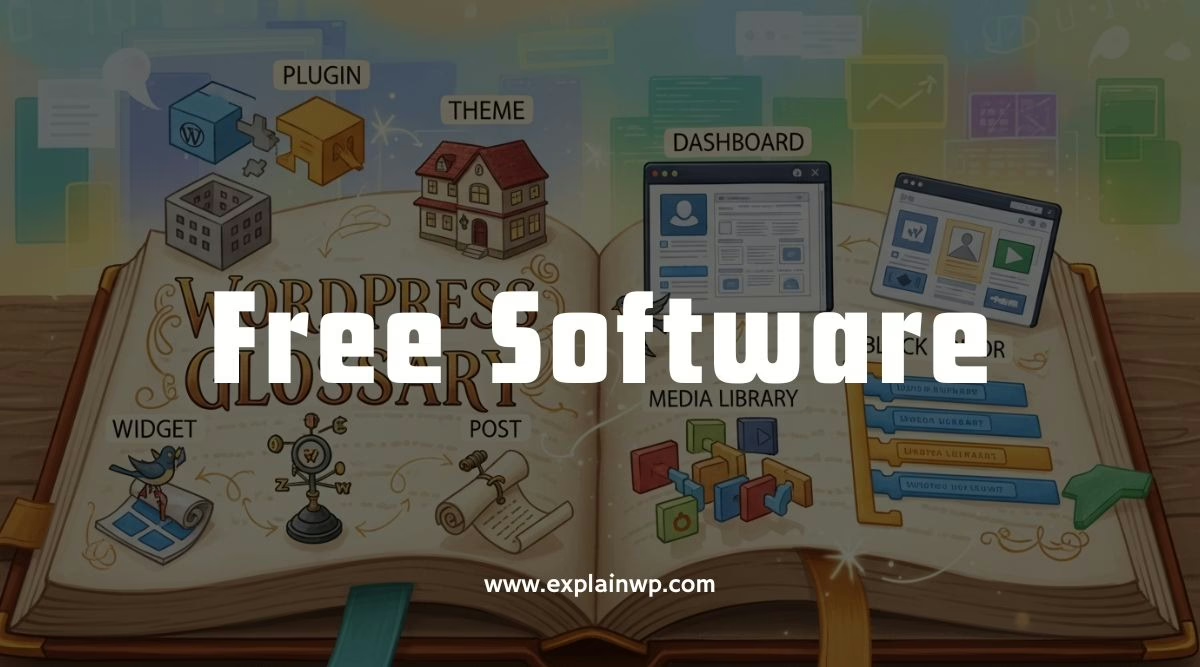Free Software

What are the origins and definition of free software? – This article explores the evolution of free software, its philosophical foundations, and its impact on the tech industry.
Free software, initiated by Richard Stallman in 1989, aims to protect the freedom of software users by granting them unrestricted access, modification, distribution, and use of programming code.
Released under the GNU General Public License, free software like WordPress is not only open-source but also sustains itself through contributions from an open-source community and revenue generated from related services.
Summary & Key Takeaways
Hide
- Free software allows users to freely access, modify, distribute, and use the programming code without any restrictions.
- Free software is a social movement that aims to protect the freedom of software users.
- Richard Stallman started the Free Software movement in 1989 to combat the increasing restrictiveness of software licenses.
- Free software refers to software released under the GNU General Public License (GPL), such as Stallman’s GNU operating system.
What is Free Software and The Evolution of Free Software
The evolution of free software can be traced back to Richard Stallman’s initiation of the Free Software movement in 1989. This movement aimed to address the increasing restrictiveness of software licenses.
Free software, with its emphasis on freedom rather than price, has played a significant role in promoting innovation.
By allowing users to freely access, modify, distribute, and use the programming code, free software encourages collaboration and fosters creativity.
However, free software also faces challenges in a profit-driven industry.
The traditional software industry relies heavily on proprietary models that prioritize profit over user freedom.
This creates a barrier for the adoption and acceptance of free software.
Furthermore, the lack of financial incentives for developers can hinder the development and maintenance of free software projects.
Despite these challenges, free software continues to thrive and make significant contributions to the advancement of technology and innovation.
The Philosophical Foundations of Free Software
One of the philosophical foundations of the concept under discussion is centered around the preservation of user freedom. Free software is built upon philosophical principles that prioritize the freedom of software users.
This concept emerged in response to the increasing restrictiveness of software licenses, with Richard Stallman leading the Free Software movement in 1989.
The GNU General Public License (GPL) is a key component of this movement, acting as a software license that offers users four fundamental freedoms: the ability to run, study, share, and modify the software.
These freedoms ensure that users have control over the software they use, promoting software freedom.
Additionally, free software differs from open-source software in that it places a stronger emphasis on freedom rather than just the sharing of source code.
The Impact of Free Software on the Tech Industry
The Impact of Free Software on the Tech Industry is significant and has revolutionized the way software is developed and distributed.
The open-source movement, of which free software is a part, has disrupted traditional business models and challenged the dominance of proprietary software.
By allowing users to freely access, modify, and distribute software, free software has fostered a collaborative and transparent development process.
This has led to the creation of robust and innovative software solutions, with a wide range of applications across industries.
Additionally, the economic implications of free software cannot be ignored.
It has enabled cost savings for businesses by eliminating the need for expensive licenses and reducing dependence on proprietary vendors.
Furthermore, the open-source model has stimulated entrepreneurship, as it allows individuals and organizations to develop and sell premium software services and products based on free software foundations.
